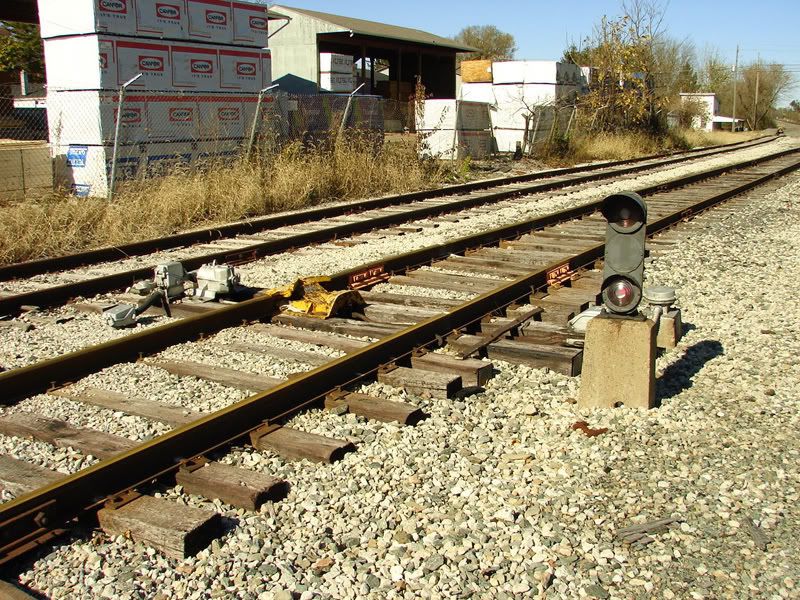Here's one that I looked for info on, however as awesome as Google is...you also have to know what it is you are looking for.
I have a question (or two) with regards to dwarf signal lights or for any signal light for that matter. I was at the Scarborough Model Railroaders open house yesterday and fell in love with these little buggers dotting the switches at ground level in some of the yards on the HO layout.
Say I wanted to install one (or several..teehehe) of these guys next to my t.o.'s, how would I set up the lighting? Would I use a red and green light, one light/bi-polar LED or two seperate lights?
What colours would be more prototypical? Red, Green, Amber...Pink? Would the red mean the diverging rails have been thrown, and the green would mean straight through? Or would you use an amber light, instead of the red indicate that the t.o. is thrown and to proceed with caution?
Or Pink to signal that everything it coming up roses? :grin:
I was going to pester the gents in the club, however they seemed pretty engrossed in keeping the trains running for all the visitors.
I have a question (or two) with regards to dwarf signal lights or for any signal light for that matter. I was at the Scarborough Model Railroaders open house yesterday and fell in love with these little buggers dotting the switches at ground level in some of the yards on the HO layout.
Say I wanted to install one (or several..teehehe) of these guys next to my t.o.'s, how would I set up the lighting? Would I use a red and green light, one light/bi-polar LED or two seperate lights?
What colours would be more prototypical? Red, Green, Amber...Pink? Would the red mean the diverging rails have been thrown, and the green would mean straight through? Or would you use an amber light, instead of the red indicate that the t.o. is thrown and to proceed with caution?
Or Pink to signal that everything it coming up roses? :grin:
I was going to pester the gents in the club, however they seemed pretty engrossed in keeping the trains running for all the visitors.


